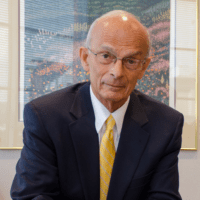In an opinion announced at the end of the 2006-2007 term, the U.S. Supreme Court decided a case concerning student free speech rights and the ability of a school district to discipline students who advocate illegal drug use. The case is an interesting step in the evolution of free speech rights and may have application to your district’s day-to-day administration of student discipline.
In Morse v. Frederick, the Court reviewed the lawfulness of the action of a high school principal in Juneau, Alaska in suspending a high school student. In June of 2002, the Olympic torch relay was proceeding through Juneau on its way to the site of the winter games to be held in Salt Lake City, Utah. The administration of the Juneau-Douglas High School decided that, because the relay was going to proceed down the street where the school was located, the student and staff populace could choose to leave class and observe the relay from either side of the street in front of the school, although the students would continue to be under school supervision.
Joseph Frederick, a high school senior, stood on the street with several friends to watch the procession. When the Olympic torch bearers crossed in front of the group, Frederick and his friends unrolled a banner 14 feet long on which was written “BONG HITS 4 JESUS.” The banner could be read by the people on the other side of the street, including the high school principal, who immediately crossed the street and instructed the students to take it down. All of the students except for Frederick agreed to her request. In response to his refusal, the principal issued him a 10-day suspension on the grounds that the banner promoted or encouraged illegal drug use, in violation of school policy.
The superintendent reduced the suspension to eight (8) days, and Frederick further appealed the suspension to the School Board, which upheld the suspension. From there, Frederick filed a federal suit against the district and the principal alleging that his free speech rights had been infringed when he received the suspension. The lower court granted the school district’s motion for summary judgment, ruling there had been no infringement of the student’s First Amendment rights and finding that the banner promoted illegal drug use in violation of school board policies. On appeal, the Ninth Circuit Court of Appeals reversed and held that the student had been deprived of his First Amendment rights.
In deciding in favor of the student, the Ninth Circuit applied the test from the landmark Supreme Court decision of Tinker v. Des Moines Independent Community School District, and held that the school district did not establish there was a substantial risk of disruption to the educational process by Frederick unfurling the banner. For many years the Supreme Court’s decision of Tinker v. Des Moines has been the landmark case regarding the free speech rights of students, and its holding is codified in the student rights portion of the Pennsylvania Code at 22 Pa. Code 12.9(b). Tinker concerned the right of grade school students to wear black armbands to protest the Vietnam war. The Court held that students retain some First Amendment rights and that a school district could not punish student free speech unless it created a substantial risk of disrupting school operations and the educational process. Applying that test, the Ninth Circuit decided that the BONG HITS 4 JESUS banner did not constitute a substantial disruption to the educational process and could not be the cause of student discipline.
In an opinion written by Chief Justice John Roberts, by a 5-4 vote, the Supreme Court reversed the Ninth Circuit and held the school was permitted to suspend the student and did not violate his First Amendment rights. The Court held that schools may take steps to restrict speech that encourages illegal drug use, and thus the school principal acted properly in confiscating the pro-drug banner and suspending the student at issue. The Court rejected the student’s argument that it was not a school-sponsored event by noting that it occurred during normal school hours and was approved by the administration as a social event where the district’s conduct rules were expressly applicable, and students were supervised by staff. Further because other students were subjected to the message Frederick intended to convey with the banner, his speech had the effect of promoting illegal drug use to other members of the school populace.
Turning to Tinker, the Supreme Court drew a distinction between that standard and the standard employed by the Court in Bethel School District No. 403 v. Fraser, an earlier case where the Court upheld the suspension of a student who made a speech at a school assembly which contained a graphic and explicit sexual metaphor. Because the Fraser court held that a school district could lawfully impose sanctions concerning lewd or indecent speech, even without showing a substantial risk of disruption in the educational process, the Court noted that a school district has an important interest in deterring drug use by students, and that on that basis a school is free to impose penalties under its code of conduct for speech which promotes illegal drug use. The Court held that the special characteristics of the school environment and the governmental interest in deterring student drug abuse justified the district’s action. The Court also noted that the principal at issue was entitled to certain deference as a result of being required to act quickly to address the matter of the student’s expression at a public event.
Turning to facts and circumstances which may be presented in your school district, the Supreme Court’s holding in Morse v. Frederick demonstrates that there are other bases to regulate student speech other than the “substantial disruption to the educational process“ test set forth in the Tinker case. However, districts should be careful to narrowly draw and enforce speech codes to ensure that they are deterring or punishing offending speech within similar circumstances.

